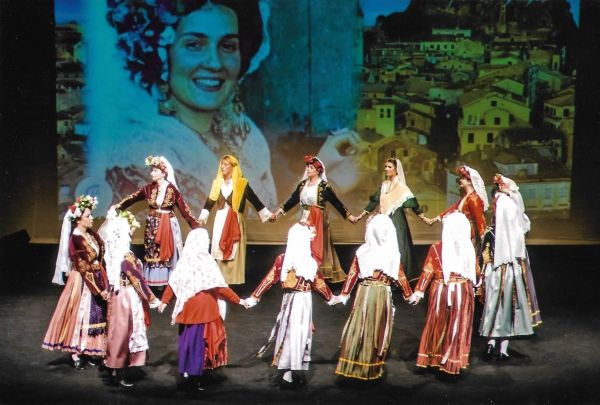Traditional dances in Greece are still very numerous and widespread, with regional variations, throughout the country. Some have even gone beyond national borders with the Greek diaspora and have reached every corner of the world, becoming the symbol abroad of a cultural and national identity very dear to the Greek people.
Dancing in Greece also has the important social function of bringing the community together for parties and celebrations, becoming a predominantly collective activity. It is no coincidence that in many Greek folk dances the arrangement of the dancers is mostly in a circle, with the dancers close to each other. The music that accompanies the dance is also often complemented by singing, thus also involving the spectators in this moment of shared show.
As for popular theatre (more information on this is available on our blog, in the article dedicated to Karagiozis), dance also played an active role in the preservation of the so-called "Greekness" in the periods in which the foreign oppression was most insistent and the lack of freedom was more sensitive. The tradition of folk dances was in fact maintained and developed in a more widespread way during the Ottoman occupation from the fifteenth to the nineteenth century and the protest against foreign oppression was consolidated through folk dance in its various forms. Heroism in life and courage before death have become the crucial points both of many popular songs and of the dances that accompany and complete them. In the Cretan dance Pendosalis, for example, the revolt of the island against the Turks in 1770 is commemorated by transforming history into dance steps: the fifth step (in memory of what was the fifth revolt against the oppressor) is multiplied by 2 and is accompanied by 12 turns in honour of the twelve leaders of the revolt, in a real exaltation of military struggle and virility. Similarly, kleftike dances also have a military character and were performed before or after the battles against Ottoman troops. Over the centuries, folk dances have adapted to the evolutions of history while preserving their function of national cohesion and solidity as well as their bursting revolutionary matrix. The aforementioned kleftike dances, for example, were also danced by the Resistance during the German occupation in the years 1941-1945, before and after any sabotage or attack on Nazi formations. Dramatically, the Dance of Zàlongo was often practiced in German concentration camps before any shooting of partisans. Even during and after the civil war (1947-1951), traditional and historical dance was practiced and interpreted as an act that strengthened political belief, the firmness of endurance and opposition to planned political violence. Traditional dance is therefore much loved in Greece not only for its power of aggregation in moments of celebration, but also and above all because it is an integral part of the national memory and constitutes an important cultural heritage, because it is a manifestation of traditions and a creative mean of expression in contingent situations of emergency, struggle and resistance.
In today's Greek society, where social needs have changed and there are different realities to cope with, the love for dance has taken different forms and concretizations but has not lost its vigour. Numerous local associations and dance groups are actively committed to keeping this important cultural baggage alive, passing it on to new generations and proudly displaying it in show events often dedicated to guests visiting the country.
Even in Kefalonia, traditional dance is still much loved and practiced and somehow seems to refer to the temperament of the island's inhabitants themselves. Simple, lively, fun, with a romantic note, the dances of Kefalonia stand out for their liveliness and their ability to express the beauty and dynamism of life. You just have to join the dances and let yourself be carried away by the music!
Sources:

